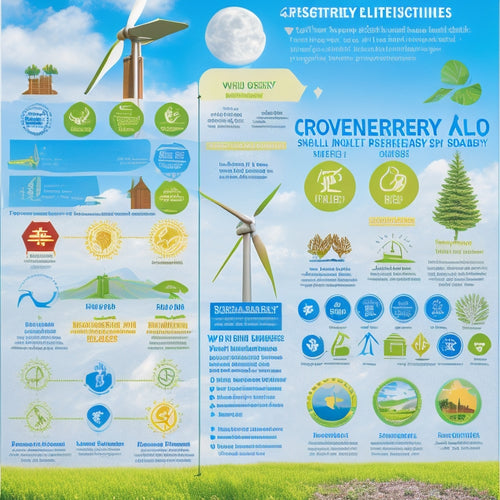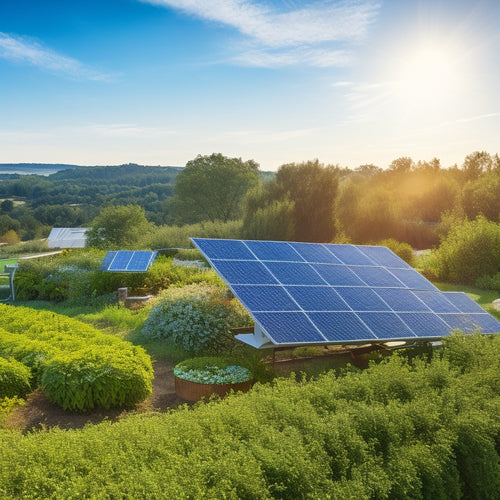Playtime With Purpose: Choosing Eco-Friendly Toys for Children
Share
As you prepare to choose the perfect toy for your child, you're likely considering factors like age appropriateness and safety. But have you stopped to think about the environmental impact of that toy? From the materials used in its production to its eventual disposal, the toy's lifecycle has a significant effect on the planet. By making informed choices, you can not only provide your child with a fun and engaging play experience but also instill valuable lessons about sustainability. But where do you start, and what options are available to you?
Key Takeaways
• Consider the environmental impact of toys and opt for eco-friendly options to reduce waste and promote sustainability.
• Avoid toys containing harmful chemicals like PVC, BPA, and phthalates, which can leach into the environment and harm children.
• Choose toys made from natural, sustainable materials like wood, recycled plastic, and bioplastics, which reduce waste and conserve resources.
• Explore second-hand and vintage toy options, which reduce waste and offer unique play opportunities, promoting a circular economy.
• Read labels and look for certifications like FSC, OEKO-TEX, and GOTS to ensure toys align with your values and meet safety standards.
The Importance of Eco-Friendly Toys
When selecting toys for your child, it's important to take into account the environmental impact of your choices, as conventional toys frequently contain harmful chemicals and add to the alarming 8.3 billion tons of plastic waste already present in landfills and oceans.
As a parent, you have the power to make a positive impact on the environment while promoting healthy child development. Eco-friendly toys not only reduce waste but also instill valuable environmental values in your child. By choosing sustainable toys, you're teaching your child the importance of reducing, reusing, and recycling. This, in turn, fosters a sense of responsibility and social awareness, essential for their emotional and cognitive development.
Toxic Materials to Avoid
You'll want to steer clear of toys containing polyvinyl chloride (PVC), a common plastic material that releases harmful dioxins and phthalates, known to cause hormonal imbalances and other health issues in children. These toxic substances can leach into the environment, contaminating air, water, and soil, and ultimately, your child's body.
Bisphenol A (BPA) is another chemical to avoid. Found in some plastics, BPA risks have been linked to reproductive problems, cancer, and neurological damage. You don't want your child's toys to be a source of chemical exposure.
When shopping for toys, read labels carefully, and opt for natural materials like wood, cotton, and wool. Be wary of toys with strong chemical odors or those made from unknown materials.
Sustainable Materials Matter
As you explore eco-friendly toy options for your child, you'll want to explore sustainable materials that aren't only better for the planet but also safer for your little one.
You'll discover a range of alternatives that are gentle on the environment, from natural wood delights that evoke a sense of nostalgia to innovative recycled plastic options and bioplastic alternatives that reduce waste.
Natural Wood Delights
Natural wood toys, crafted from sustainably sourced timber, offer a wholesome and environmentally responsible alternative to plastic playthings. You'll find that these eco-friendly wonders bring a touch of nature indoors, fostering a sense of wonder and curiosity in children.
Wooden puzzles, for instance, provide a stimulating way to develop problem-solving skills while encouraging creativity. Nature-inspired designs, such as wooden animals or trees, can spark imaginative play and a deeper appreciation for the natural world.
When choosing wooden toys, look for certifications like FSC (Forest Stewardship Council) or PEFC (Programme for the Endorsement of Forest Certification), which validate that the wood is harvested from responsibly managed forests. This conscious approach not only benefits the environment but also supports local communities.
As you explore the world of natural wood delights, you'll discover a vast array of engaging, educational, and entertaining toys that will captivate your child's imagination while promoting a love for nature and the environment. By opting for eco-friendly wooden toys, you're giving your child the gift of a greener, more sustainable future.
Recycled Plastic Options
While natural wood toys offer a sustainable alternative to traditional playthings, you can also make an eco-friendly impact by choosing toys made from recycled plastic, a creative solution that reduces waste and conserves natural resources. You'll be supporting sustainable production and reducing the staggering amount of plastic waste that ends up in oceans and landfills.
Opting for recycled plastic toys means you're promoting a closed-loop system, where waste is turned into something new and valuable. This approach helps to minimize ocean waste and the devastating impact it has on marine life.
Recycled materials are used to create innovative plastic alternatives, such as Eco Bricks, which can be used to build sustainable structures. By choosing recycled plastic toys, you're contributing to a more circular economy, where resources are valued and waste is minimized.
Make an informed choice for the planet's future and explore the world of recycled plastic toys – your children will thank you, and so will the planet.
Bioplastic Alternatives
Explore bioplastic alternatives, made from renewable resources like corn starch, sugarcane, or potato starch, which offer a more sustainable solution to traditional plastics. You'll find that bioplastics are derived from two main sources: microbe-based and plant-based. Microbe-based bioplastics use microorganisms to convert renewable biomass into plastic, while plant-based bioplastics are produced from agricultural resources.
| Bioplastic Type | Source | Benefits |
|---|---|---|
| Microbe-based | Microorganisms | High scalability, low environmental impact |
| Plant-based | Corn starch, sugarcane, potato starch | Renewable, biodegradable, compostable |
| PLA (Polylactic Acid) | Corn starch, sugarcane | Biodegradable, compostable, non-toxic |
| PBAT (Polybutylene Adipate-co-Butylene Terephthalate) | Corn starch, sugarcane | Biodegradable, compostable, flexible |
When choosing bioplastic toys, look for certifications like Compostable or Biodegradable Products Institute (BPI) to make sure the product meets rigorous sustainability standards. By opting for bioplastic alternatives, you're supporting a more circular economy and reducing the environmental impact of traditional plastics.
Second-Hand and Vintage Options
Can you find gently used eco-friendly toys at a fraction of the cost of new ones by scouring online marketplaces, thrift stores, and garage sales for second-hand and vintage options? You can!
Second-hand and vintage toys not only reduce waste but also offer a unique and sustainable way to play. Thrift stores are treasure troves for hidden gems, and online marketplaces like eBay and Craigslist often have a wide selection of gently used toys.
You might stumble upon a vintage toy that exudes nostalgic charm, perfect for adding a touch of retro flair to playtime. These pre-loved toys can become family heirlooms, passed down through generations, and even become a conversation starter.
With a little creativity, you can breathe new life into a vintage toy, giving it a second chance to bring joy to your child. By choosing second-hand and vintage options, you're reducing the demand for new, resource-intensive toys and promoting a more circular economy.
DIY and Upcycled Toy Ideas
You can also inspire your creativity and turn everyday items into unique, eco-friendly toys that spark imagination and learning. With a little creative reuse, you can transform discarded materials into engaging playthings that promote sustainability and environmental awareness.
Here are some DIY and upcycled toy ideas to get you started:
| Material | Toy Idea | Learning Benefit |
|---|---|---|
| Cardboard tubes | Marble run | Problem-solving, physics |
| Fabric scraps | Stuffed animals | Fine motor skills, creativity |
| Old CDs | Wind chimes | Music, sensory exploration |
| Egg cartons | Robot building | STEM, critical thinking |
Eco-Friendly Toy Brands to Know
Discovering eco-friendly toy brands that share your values can simplify the process of finding sustainable play options for your little ones. You'll want to look for brands that prioritize transparency, sustainability, and innovation.
Brands like PlanToys, a pioneer in eco-friendly toys, offer a range of sustainable products made from recycled materials. Other industry innovators, such as Hape and Grimm's, also prioritize environmental responsibility. These brands offer a glimpse into a future where playtime and sustainability coexist harmoniously.
When researching eco-friendly toy brands, look for brand transparency – do they disclose their materials, manufacturing processes, and environmental impact? Industry innovators are setting a new standard for sustainable toy production, and you can be part of the movement by supporting them.
Reading Labels and Certifications
When shopping for eco-friendly toys, scrutinize labels and certifications that guarantee the product meets rigorous environmental and safety standards, such as the Forest Stewardship Council (FSC) certification, which validates sustainable forestry practices. As a conscious consumer, you want to make sure the toys you choose align with your values. Developing label literacy is essential in making informed decisions.
Here are some key certifications to look for:
-
OEKO-TEX: ensures textiles meet high safety standards, free from harmful substances.
-
GOTS (Global Organic Textile Standard): certifies organic cotton and sustainable production processes.
-
ASTM (American Society for Testing and Materials): sets standards for toy safety, ensuring compliance with regulations.
- CPSIA (Consumer Product Safety Improvement Act): regulates chemical substances in toys, guaranteeing a safe play experience.
Rethinking Toy Consumption Habits
Every year, millions of toys are discarded, contributing to the staggering 8% of global waste attributed to toys and games. As a parent, you have the power to rethink your toy consumption habits and make a positive impact on the environment.
It's important to adopt mindful buying habits, considering the lifespan and sustainability of each toy. The effects of overconsumption are alarming, and it's vital to prioritize waste reduction. By doing so, you're not only reducing waste but also teaching your child the value of conscious parenting and responsible consumption.
Impulse control is important in avoiding the temptation of seasonal toys that often end up in landfills soon after the festivities. Instead, opt for durable, eco-friendly toys that promote creative play and imagination. By making conscious purchasing decisions, you're setting a positive example for your child and contributing to a more sustainable future.
Frequently Asked Questions
Can Eco-Friendly Toys Be More Expensive Than Traditional Ones?
You'll find that, yes, eco-friendly toys can be pricier than traditional ones, but the cost comparison is justified when considering the eco premium; however, budget constraints can be a hurdle, making it essential to prioritize and weigh the green expense.
How Do I Know if a Toy Is Really Eco-Friendly or Just Greenwashed?
When vetting eco-friendly toys, you'll encounter "Label Lies" and "Certification Concerns." Be cautious of vague claims and look for third-party certifications like Oeko-Tex or GOTS, ensuring the toy meets rigorous environmental and social standards.
Are All Wooden Toys Considered Eco-Friendly and Sustainable?
You shouldn't assume all wooden toys are eco-friendly; look for sustainable materials, responsible forest sourcing, and tree farming practices, plus natural finishes and a transparent supply chain, ensuring handcrafted quality that truly supports the planet.
Can I Make My Own Eco-Friendly Toys at Home With Recycled Materials?
You can create unique eco-friendly toys at home by embracing creative recycling and repurposing materials like cardboard, fabric scraps, and plastic containers, fostering a sense of innovation and environmental responsibility.
Will My Child Be Bored With Simple, Eco-Friendly Toys Without Technology?
You'll be surprised how simple, eco-friendly toys can spark your child's imagination, providing creative freedom to explore and invent, fostering a deeper connection with the natural world.
Related Posts
-

Renewable Energy Certifications for Businesses
Renewable energy certifications are essential for your business, showcasing your commitment to sustainability and enh...
-

Energy-Efficient Heating and Cooling Appliances
Energy-efficient heating and cooling appliances can cut your energy bills markedly. By opting for models with high En...
-

Green Energy Alternatives for Independent Living
To enhance your independent living, consider green energy alternatives like solar panels and wind turbines. These opt...


